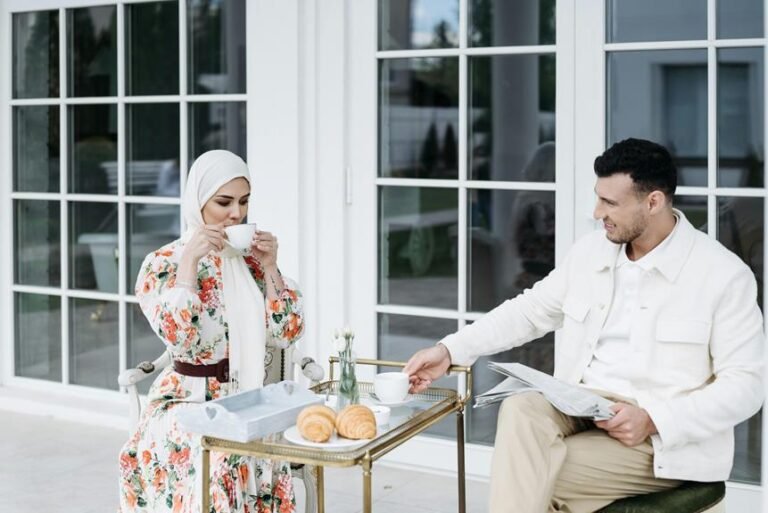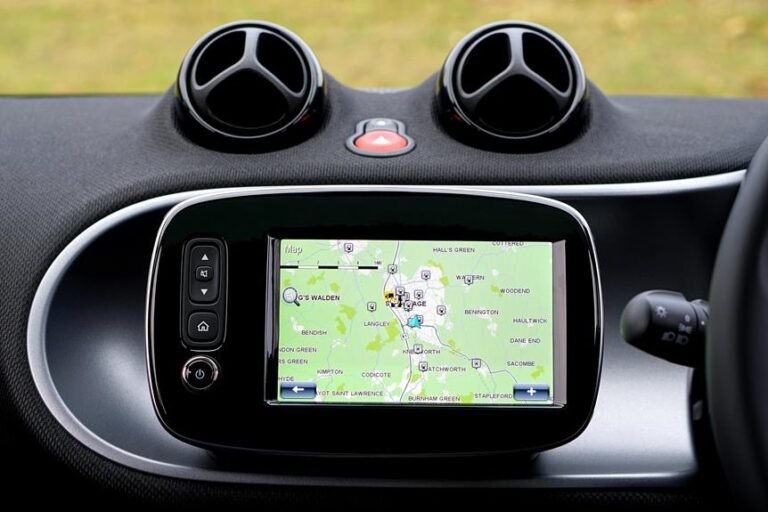Nonverbal Communication in Relationships

Understanding nonverbal cues in relationships is essential for creating deep bonds. Pay attention to your partner's body language and emotional signals – they speak volumes. Posture, gestures, and facial expressions reveal valuable insights into their feelings. Nonverbal communication enhances intimacy and trust, fostering a stronger connection. By being attuned to these cues, you can strengthen your relationship on a profound level. Embrace the silent language that underlies your interactions to truly connect with your partner on a deeper level.
Key Takeaways
- Understanding nonverbal cues enhances emotional connections.
- Body language and gestures reveal feelings and intentions.
- Facial expressions convey various emotions effectively.
- Nonverbal signals determine intimacy levels in relationships.
- Attentiveness to cues strengthens trust and communication.
The Importance of Nonverbal Communication
In relationships, understanding the importance of nonverbal communication is essential for establishing deep connections and fostering mutual understanding. Body language and emotional cues play a pivotal role in conveying feelings and thoughts that words often fail to express.
Your partner's body language, such as posture, gestures, and facial expressions, can provide you with valuable insights into their emotions and overall state of mind. Paying attention to these nonverbal cues can help you respond more effectively to their needs and concerns, creating a stronger bond based on empathy and connection.
Emotional cues, like tone of voice, eye contact, and touch, can communicate volumes about your feelings towards your partner. By being attuned to these subtle signals, you can better understand each other's desires, fears, and joys, enhancing intimacy and trust in your relationship.
Types of Nonverbal Cues
Understanding the various types of nonverbal cues can greatly enhance your ability to connect with your partner on a deeper level. Body language cues are powerful indicators of emotions and intentions that can sometimes be more telling than words.
Pay attention to how your partner positions their body during conversations – crossed arms might suggest defensiveness, while leaning in could signal interest and engagement. Similarly, facial expressions indicators reveal a wealth of information. A smile can convey warmth and happiness, while furrowed brows might indicate confusion or concern.
Being attuned to these nonverbal cues allows you to pick up on subtle nuances in your partner's feelings and thoughts, fostering a deeper understanding between you both. By actively observing and interpreting these cues, you demonstrate attentiveness and care, strengthening the emotional bond in your relationship.
Embrace the opportunity to connect on a nonverbal level, enriching your communication and intimacy.
Impact on Relationship Dynamics
Harnessing the power of nonverbal communication can greatly influence the dynamics of your relationship, shaping how you connect and interact with your partner on a profound level. Body language dynamics play a significant role in conveying emotions and intentions without uttering a single word. The way you use gestures, eye contact, and facial expressions can either enhance or hinder the emotional connection between you and your partner.
Moreover, nonverbal cues impact the power dynamics within your relationship. Subtle gestures and postures can communicate dominance, submission, or equality, shaping how decisions are made and conflicts are resolved. Being mindful of these cues can help create a more balanced and respectful partnership.
Emotional expression through nonverbal communication also plays an essential role in determining the intimacy levels between you and your partner. The ability to convey love, understanding, and empathy through nonverbal cues can deepen the emotional bond and foster a sense of closeness. Paying attention to these nonverbal signals can enrich your relationship and strengthen the connection you share with your partner.
Enhancing Communication Skills
To improve your relationship, consider honing your nonverbal communication skills as a way to deepen your connection with your partner. Active listening and body language play pivotal roles in enhancing communication skills.
When engaging in active listening, make sure to focus completely on what your partner is saying, showing genuine interest by maintaining eye contact and providing verbal and nonverbal cues to indicate understanding. Reflect back on what your partner has shared to demonstrate that you're truly engaged in the conversation.
Body language is another powerful tool in communication. Pay attention to your posture, facial expressions, and gestures, as they can convey a wealth of information to your partner. Open body language, such as facing towards your partner and nodding in agreement, can signal receptiveness and attentiveness. Conversely, crossed arms or a furrowed brow may unintentionally communicate defensiveness or disagreement.
Misunderstandings and Resolutions
Managing misunderstandings in relationships demands effective communication and a willingness to seek resolutions together. It's common for misinterpretations to arise, whether through nonverbal cues or verbal exchanges.
When conflicts surface, it's pivotal to approach them with a mindset geared towards understanding and resolution. One key aspect of addressing misunderstandings is clarifying intentions. Often, what one person communicates mightn't align with how the other person perceives it.
Taking the time to express your thoughts clearly and listen actively can prevent many disagreements from escalating.
Resolving conflicts involves more than just finding a quick fix. It requires empathy, patience, and a genuine desire to bridge the gap between differing perspectives. Instead of focusing on proving yourself right, try to understand where the other person is coming from.
This shift in mindset can pave the way for constructive dialogue and mutual growth within the relationship. Remember, disagreements are a natural part of any relationship, but how you navigate them can strengthen your bond and deepen your connection.
Building Trust and Connection
Establishing trust and deepening emotional connections are foundational elements in nurturing a healthy and fulfilling relationship. Body language plays a significant role in building trust and fostering intimacy with your partner. Nonverbal cues such as a gentle touch, warm embraces, or sitting closely can convey feelings of security and love without verbal communication.
Eye contact is another powerful tool that communicates empathy and understanding. When you maintain eye contact with your partner, you show them that you're fully present and engaged in the moment, strengthening your bond and connection.
To build trust and deepen emotional connections, being attuned to your partner's nonverbal cues and responding with care and sensitivity is crucial. Pay attention to their body language and facial expressions, as these can often reveal more than words.
Nonverbal Communication Exercises
Engage in simple yet impactful nonverbal communication exercises to deepen your connection and understanding with your partner. Interactive games and trust exercises can be powerful tools to enhance the bond you share. Consider trying activities like mirroring each other's body language to build rapport and strengthen empathy. By mimicking your partner's gestures, you demonstrate attentiveness and a willingness to connect on a deeper level.
Another exercise to foster emotional connection is practicing active listening without words. Sit facing each other, maintain eye contact, and take turns expressing emotions through facial expressions and gestures. This exercise can help you both tune in to each other's feelings without relying on verbal cues.
Frequently Asked Questions
How Can Nonverbal Cues Differ Between Cultures?
Nonverbal cues vary across cultures, leading to potential misinterpretation. Understanding these cultural differences can deepen your connections and interactions with others. Embrace the richness of nonverbal communication to bridge cultural gaps and foster understanding.
Can Nonverbal Communication Be Improved in Long-Distance Relationships?
In long-distance relationships, enhancing nonverbal communication is crucial. Technology impacts how you connect, but trust building is key. Use video calls, share photos, and express emotions openly to bridge the physical gap and deepen your bond.
What Role Does Body Language Play in Nonverbal Communication?
Body language serves as a powerful tool in nonverbal communication. It conveys emotional cues, influencing trust signals and intimacy. However, misinterpretation can occur, impacting the depth of connection. Understanding these signals fosters stronger relationships.
Are There Gender Differences in Interpreting Nonverbal Cues?
When it comes to interpreting nonverbal cues, gender stereotypes and social norms can influence how you perceive signals. It's important to challenge preconceived notions and communicate openly to truly understand each other.
How Can Nonverbal Cues Affect Digital Communication in Relationships?
In digital communication, nonverbal cues like emoticon usage can convey emotions. However, tone detection is crucial as misinterpretation may lead to misunderstandings. Stay mindful of these cues to nurture understanding and connection in your relationships.
Conclusion
To sum up, nonverbal communication plays a pivotal role in relationships. By being aware of different cues and their impact on dynamics, you can enhance your communication skills and build trust with your partner.
Remember to practice active listening and work through misunderstandings together.
By incorporating nonverbal communication exercises into your relationship, you can deepen your connection and foster a strong, healthy bond.
Keep communicating openly and honestly to nurture your relationship.







3 Comments